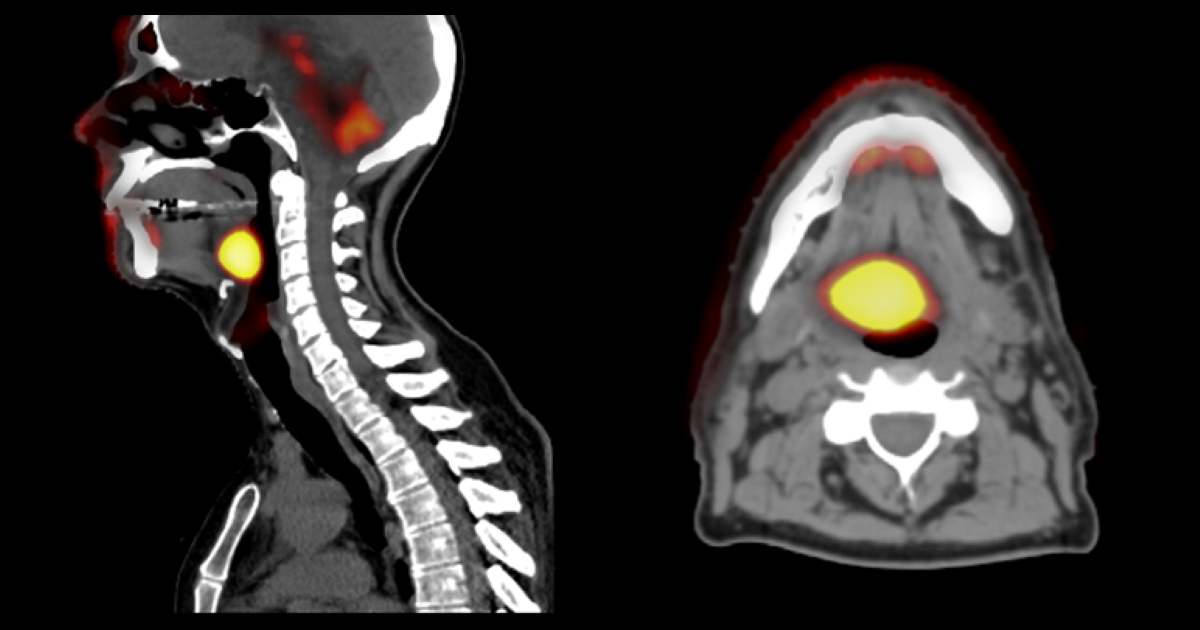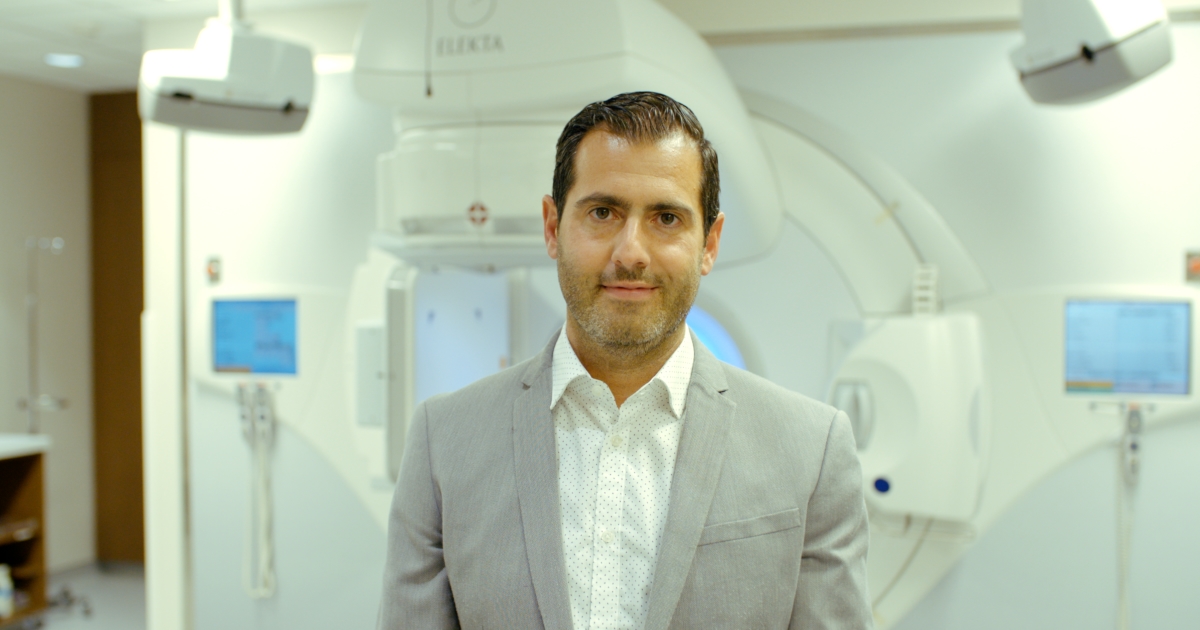Blogue
Cancer & AI working together for treatment


The algorithm developed by the Polytechnique Montreal team in collaboration with the CHUM, analyzes CT and PET scans (among other images), to determine a prognosis for the patient. (Credit : Pr Samuel Kadoury)
A group at Polytechnique Montreal is working to simplify the work of oncology teams treating patients with neck and head cancer. Their tools? Medical data and an artificial intelligence (AI) algorithm. They recently demonstrated the helpfulness of their approach in a paper published last week in Scientific Report.
Each cancer comes with its own distinctive patterns, therefore, treatment must be adapted. The genetic profile of the cancer cells, the tumor’s shape and size, the patient's overall health, age, sex, etc.: each criterion has a weight in terms of treatment choice.
However, treatment possibilities are numerous, and oncologists must choose from among various forms of treatment, including chemotherapy, radiotherapy, and surgery. The latter approaches can be used alone or in combination. What strategy should be adopted to eliminate as many cancer cells as possible? What treatment will delay cancer’s recurrence and limit the negative impact of the procedures on the patient's quality of life? These are the kinds of questions that must be considered when determining a course of action and treatment.
The problem is that still grey areas still exist, so it’s impossible to offer the best possible treatment with any certainty. Polytechnique Montréal Full Professor Samuel Kadoury (Department of Computer and Software Engineering) wants to change that, and he’s banking on AI for the solution.
A Decision support tool

Professor Samuel Kadoury (Photo : Mike Redmond)
The secret of Professor Kadoury's team is an algorithm, a "self-attention" neural network named PreSANet – which stands for pseudo-volumetric neural network with deep preprocessor module and self-attention layers.
The group trained its mathematical tool on a dataset of 298 patients who had previously suffered from neck or head cancer. It then tested the same tool on a retrospective dataset of 371 patients. The results were promising: PreSANet "predicted" prognoses that were close to those actually experienced by these patients.
In addition to considering variables such as age, gender, and tumor stage, the algorithm analyzes CT scan and PET scan images, using that data to then estimate the probability of metastasis around the tumor. This in turn establishes a prognosis for cancer recurrence and estimates the patient's survival index.
"With this information, the oncologist can make a more informed treatment choice," notes Professor Kadoury, who holds the Canada Research Chair in Assisted Intervention and Medical Imaging. "This is important, because some treatments can be painful and discouraging for patients, especially if they turn out to be ineffective."
PreSANet has the qualities of being both robust and generalizable, and has avoided the so-called bias trap by training on data from four hospitals. Professor Kadoury explains the bias trap: "One of the problems we often encounter in AI, is when you train an algorithm with data from a single clinical center, there is no guarantee that the tool will work with data from other hospitals. Our tool is accurate enough to determine what information it should include in its analysis, while excluding variables related to the hospital's acquisition parameters.”
OPTIMIzing... external radiotherapy treatments |
|
Professor Kadoury's team is primarily interested in the various applications of external beam radiation therapy. This approach attacks cancer cells by bombarding the tumor area with radiation. This technique is effective, but it comes with a significant downside: the radiation also affects healthy cells in the area targeted for treatment. It goes without saying that healthy cells should be spared as much as possible. The problem is particularly important in lung cancer patients, Kadoury explains. "In lung cancer cases, timing also needs to be taken into account. Our goal is to capture images of the tumor at each breathing phase, and then tailor radiation treatments based on the movement caused by breathing." His team is also looking at radiation treatment for cancers of the oropharynx. "For that type of cancer, we’re interested in the longitudinal component," he explains. In other words, his group analyzes CT scan and PET scan images taken before each treatment to tailor the treatment to the tumor as it regresses. |






Comments
Commenter
* champs obligatoire